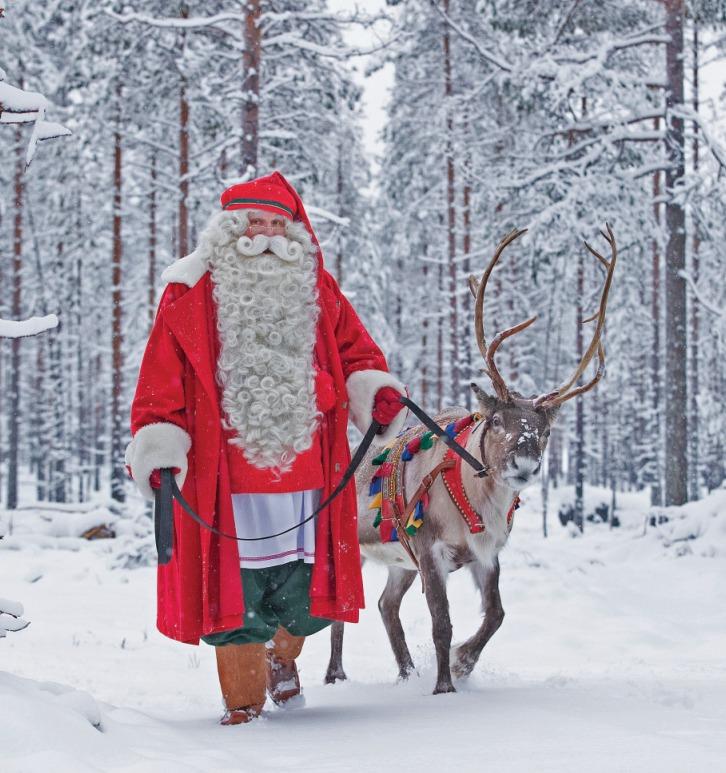 Scenic sights such as the Northern Lights, as seen from SnowHotel, have been popular with tourists. (PHOTO PROVIDED TO CHINA DAILY)
Scenic sights such as the Northern Lights, as seen from SnowHotel, have been popular with tourists. (PHOTO PROVIDED TO CHINA DAILY)
In normal times, it is a common sight in the city of Rovaniemi in the Arctic Circle to see throngs of Chinese holidaymakers visit Santa Claus's main post office to send Christmas cards with special local postmarks, or to be waiting to check in at the glass-roofed igloos for Northern Lights-spotting.
However, the COVID-19 pandemic has hit the capital of the northern Finnish province of Lapland very hard, and its usual stream of visitors from China has all but dried up.
Since 2017, China has been the biggest tourism source market for Rovaniemi, with traveler numbers increasing yearly before the pandemic hit
Sanna Karkkainen, managing director of Visit Rovaniemi, estimates that the lack of tourists from China in 2020 cost the local economy around one-third of its revenue.
"Visit Rovaniemi expected a tourism revenue loss of around 200 million euros (US$237 million) in 2020, with around 40 million euros from hotels and accommodation and about 160 million euros from other consumption, such as program services, transportation, shopping and dining," she said.
"China has been the biggest source of travelers, and we estimate up to 50 to 70 million euros has been lost as a result of the loss of business from China."
READ MORE: Finland defends title as world's happiest nation for 4th time
Since 2017, China has been the biggest tourism source market for Rovaniemi, with traveler numbers increasing yearly before the pandemic hit. The destination welcomed a record number of more than 56,200 Chinese visitors in 2019, according to the regional tourist authority.
In recent years, Finland has emerged as one of the top winter destinations for Chinese visitors, driven by frequent direct air links between the two nations, the extensive rollout of Chinese mobile payment services in the country, and close collaboration with the country's online travel agency platform.
Wu Zhaohong, China director for Visit Finland, said: "Among nationalities, Chinese tourists ranked fifth for overnight stays in Finland in 2019, and China was the biggest long-haul source market."
The China-Finland Year of Winter Sports in 2019 resulted in more than 384,000 visitors from the Chinese mainland that year, with more than 107,000 trips made during the peak winter season, according to Visit Finland.
In 2019, Chinese visitors to Finland spent a total of US$271 million, with each arrival spending an average of US$680, Wu said, which is high, compared with other markets.
 A man dressed as Santa Claus walks with a decorated reindeer in Rovaniemi, Lapland, Finland. (PHOTO PROVIDED TO CHINA DAILY)
A man dressed as Santa Claus walks with a decorated reindeer in Rovaniemi, Lapland, Finland. (PHOTO PROVIDED TO CHINA DAILY)
ALSO READ: Finland to offer new fathers as much paid leave as mothers
Rovaniemi has been particularly popular for Chinese visitors as more of them choose to travel to Santa Claus Village for their Spring Festival holiday, the lunar Chinese New Year.
Karkkainen said the drivers for the increase of Chinese interest in the region are the adaption to Chinese offerings, as well as digital engagement across all verticals.
"The tour operator connections and cooperation with agencies have been highly important," she explained. "Such milestones like Alitrip and Fliggy (Alibaba's online travel agency platforms) opening their tour productions to Europe and Rovaniemi with impressive launch campaigns in 2017, as well as mobile payment device launches by Alipay, straight from the Arctic Circle, were unforgettable global events and started a whole new era.
"This gave Rovaniemi a great boost that was prolonged by fantastic relationships with all our Chinese partners," she continued.
"Rovaniemi has great assets for tourism-Santa Claus (Santa Claus Village, Santa Park, Santa's Secret Forest), the Northern Lights (visible approximately 200 nights per year), Midnight Sun (one month of light hours as night disappears), snow and reindeer."
But the novel coronavirus has stalled that boom. Figures from Visit Roveniemi showed that only 23,200 Chinese overnights were registered in 2020, a significantly drop of nearly 60 percent year-on-year.
Despite the gloomy picture, Karkkainen is confident of a robust recovery, driven by the Chinese visitors, once the spread of the virus is contained, and international travel certificates are in place.
"We see China as a great potential once the tourism restrictions have eased up and accessibility works again," she added. "We count on the development work we've done with all the partners for years and the brand awareness of Rovaniemi gained with the Chinese markets. We remain waiting, with our hearts full of hope, for tourism to be reborn."


